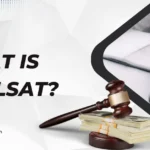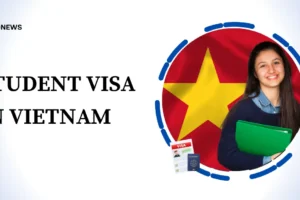If you are planning to study in the United States, you will need a United States Student Visa. You might need one of three types of visas: F1, J1, or M1.
Table of Contents
Being a student, you might be wondering, what visa lets you work as a student in the US? The F1 and J1 Visas might allow you to work, but it is not guaranteed. On the other hand, the M1 Visa does not allow any work. In this article, we will break down each visa so you know what to expect while you are in the US.
We will also discuss the United States (US) student visa, its eligibility, visa requirements, documents needed, costs, and more. So, let’s get started.
Key Takeaways
- There are 3 main types of student visas for the US: F-1 for academic studies, M-1 for vocational studies, and J-1 for exchange programs.
- To get a visa, you need to be accepted by a school and show you have enough money to cover your stay.
- F-1 visa allows part-time work on campus (up to 20 hours/week).
- M-1 visa does not allow any work during studies.
- J-1 visa allows work with permission from the exchange program sponsor.
- The application process typically takes 3-5 weeks, with an interview as the final step.
- After graduation, F-1 visa holders have 60 days to leave the US, M-1 and J-1 visa holders have 30 days. You can apply for an extension if you want to stay longer.
Types of International Student Visas
- If you are going to study in the US, you will need either an F-1 or M-1 visa.
- F-1 visas are for students who will be studying academic subjects full-time.
- M-1 visas are for those who will be studying vocational subjects full-time.
- The J-1 visa is for exchange students. This visa is for people who will be part of exchange programs for work and study.
For example, you might be a visiting scholar, camp counselor, au pair, or research assistant.
F1 Visa (Academic Studies)
If you are planning to study in the US, you might get an F1 visa for academic studies. Here is what you should know about F1 visa:
- F1 visa is given to students attending academic or English Language Programs.
- F1 visas are the most common type of international student visa in the US.
- As an F1 student, you need to take a minimum number of courses to be considered a full-time student.
- You can also work part-time on campus, but not more than 20 hours a week.
- After finishing your studies, you can do optional practical training (OPT) for up to one year.
- But please make sure to complete your studies before the expiration date on your I-20 form.
J1 Visa (Practical Training)
If you are a student who needs practical training not available in your home country, you might get a J1 visa. Here is what you should know about J1 visa:
- J1 visa is for completing your academic program with hands-on experience.
- With a J-1 student status, you can work like an F1 visa holders, but you need permission from your exchange visitor program sponsor.
- It is kind of like the F1 visa but with different training opportunities.
M1 Visa (Non-Academic / Vocational Studies)
If you are going to a non-academic or vocational school, you might need an M1 visa. Here is what you should know about M1 visa:
- With this visa, you won’t be allowed to work during your studies.
- To get an M-1 visa, you need to show that you have enough money to cover all your expenses for your entire stay.
Documents Required for United States Student Visa
Before heading to the United States, it is important to learn about the documents you will need. It is smart to carry your original papers with you all the time.
You must refrain from stashing them in your checked bags. Also, make two copies: one to leave with your family before you go and one for your school officials. Here are the documents you will need:
1. Academic Documents
Your academic documents include:
- High school transcripts
- Bachelor’s degree (if required)
- Acceptance letter from your university or college
- Proof of English language proficiency (like IELTS, TOEFL, or PTE scores)
- Scores from exams like ACT, SAT, GMAT, or GRE
- Provisional certificates
- Letters of recommendation
- Statement of purpose
- Proof of any work experience
2. Financial Documents
Your financial documents include:
- Bank statements to show you have enough money for your studies (this is also called the I-20 proof of funds)
- Salary slips and a letter from your employer
- A sponsorship letter if someone is paying for your studies
- Tax returns from the past three years
- A letter from a Chartered Accountant
- Any scholarship letters you may have
3. Visa Documents
Your visa documents include:
- A valid passport
- A printed copy of the DS-160 form you filled out online
- Your interview appointment letter
- The receipt showing you paid the SEVIS fee
- The I-20 form given to you by your university or college
- Confirmation that you paid the visa fee
How To Apply for Your U.S Student Visa?
Here is how you can apply for your United States (US) student visa:
- When you are applying for a student visa, the first thing to do is check your university’s admission policy.
- Each school has its own rules, so make sure you meet them.
- If you are still looking at different schools, you can use the USA School Search to see their requirements.
- You will also need to prove you have enough money to support yourself without working. It means you must have enough funds to cover your expenses.
- Health insurance is important too while studying in the US. You might have to show you have it to cover any medical costs while you are studying.
How To Check If You Are Eligible To Enter In The United States?
When you get your visa, it is not a guarantee that you will be allowed into the United States. The Customs and Border Protection (CBP) officers decide when you arrive. They also decide how long you can stay.
At the entry point, a CBP officer gives you a Form I-94, which shows how long you can stay in the U.S. It is a small white card. This card acts like your permission slip to stay in the U.S.
What To Do After You Arrive in the United States?
Here is a step-by-step guide on what needs to be done once you arrive in the US:
1. Form I-94
When you arrive in the United States, you will get a paper called Form I-94. It is extremely important. It proves that you have entered the U.S. legally and shows how long you can stay.
It is important to make sure all the information on it is right. If there are any mistakes, it can cause problems, like issues with getting a Social Security number.
If you come by land, they will give you a paper Form I-94. But if you arrive by air or sea, the officers will create an electronic Form I-94 for you.
They will put a stamp in your passport with details like when you entered and how long you can stay. You can get the electronic record at www.cbp.gov/I94.
2. Secondary Inspection
If the CBP officer cannot check your information or if you do not have all the needed papers, they might ask you to go to a special area called secondary inspection.
3. Form I-515A
If you do not have all the needed papers when you reach the U.S. border, CBP officials might give you a Form I-515A. It is a notice for students or exchange visitors.
4. Reporting to your School
You have got 30 days to enter the country before your official program starts. This data is recorded in SEVIS. When you received your student or exchange visitor status, you agreed to follow this rule.
Please make sure to report to your school by the program start date on your Form I-20. If you don’t, you are not keeping up with your status. It is a good idea to let your school know right after you arrive so they know you are here.
If you cannot come to the United States when your Form I-20 says, or if you will be a few days late, get in touch with your school officials as soon as possible. They need to update your SEVIS record with the correct information.
Cost of US Student Visa
Now that you know what you need for a US student visa, let’s talk about how much it costs. There are two parts to the fees: the SEVIS fee and the visa application fee.
The SEVIS fee and the visa application fee make up the total cost of the US student visa. Let’s break down the costs for different types of visas.
| Type of Fee | F-1 Visa Type | J-1 Visa Type | M-1 Visa Type |
| SEVIS Fee | 350 USD | 220 USD | 350 USD |
| Visa Application Fee | 160 USD | 160 USD | 160 USD |
US Student Visa Processing Time
When you apply for a US student visa, it usually takes about 3-5 weeks for processing. Sometimes, it can take longer, like 2-3 months.
This depends on your application and the type of visa you are applying for. If you are applying for an F-1 visa, it might be quicker than other types.
Once the US visa consulate approves your application, you will likely get your visa in the mail within 2-3 days. And for F-1 visas, they are usually given out about 120 days before your program starts in the US.
US Student Visa Interview Process
When you are applying for a US student visa, the interview is the final step. But this can vary from country to country. A good interview can mean you will get your visa right after.
The interview is not too long. It is usually about 4-5 minutes. Make sure you bring all your visa interview documents in a neat file.
During the interview, they will ask about why you are going to the US and if you know about your program and university. At the end, they will likely ask for your passport to put the visa stamp on it.
How To Live With Your Student Visa in the USA?
When you are thinking about how to pay for your studies and living expenses in the United States, please keep in mind that you cannot rely on getting a job there unless you have been offered a teaching or research assistant position.
The rules about working while you are on a student visa are very strict. So do not include potential income when you are showing how you will support yourself. The money you have to show must be certain and enough to cover your first year of studies.
It is important to plan carefully for both the short term and the long term to make sure you have a great experience studying in the United States.
Can You Work in the U.S. With a Student Visa?
If you have an F-1, M-1, or J-1 visa, you might get a chance to work in the U.S. But you will only be allowed to work on campus or in a job related to what you are studying.
If you have a J-1 visa, you must check with your responsible officer to see if you can work outside of your study program.
How Long You Can Stay in the US After Graduation?
According to US immigration rules, if you have an F visa, you should leave the US within 60 days after your program ends.
If you have a J or M visa, you must leave within 30 days after your program ends. But if you want to stay longer, you can ask for more time through the USCIS website.
Before you do that, it is a good idea to check out other visa options for after you finish your studies.
How To Change Your Visa Status in the United States?
If your plans change while you are in the US and you need to switch your visa type, you do not have to get a whole new visa.
You just have to ask USCIS to change your status. It is wise to tell your Designated School Official (DSO) about this because they need to know if anything changes with your visa. They can also help you with the process.
United States (US) Student Visa Summary
| Criteria | F-1 Visa (Academic Studies) | J-1 Visa (Exchange Visitors) | M-1 Visa (Vocational Studies) |
| Eligibility | Full-time academic studies meet financial requirements | Exchange programs (work & study), for practical training not available in the home country | Full-time vocational studies meet financial requirements |
| Work Permit | Part-time on campus (up to 20 hrs/week), Optional Practical Training (OPT) up to 1 year after graduation | Permission required from sponsor (similar to F-1 but with different training opportunities) | Not allowed |
| After Graduation | Leave the US within 60 days, complete studies before the I-20 expiration date | Leave the US within 30 days (apply for an extension), program completion is not required | Leave the US within 30 days (apply for an extension) |
| Cost | SEVIS fee: $350, Visa application fee: $160 | SEVIS fee: $220, Visa application fee: $160 | SEVIS fee: $350, Visa application fee: $160 |
| Processing Time | 3-5 weeks (usually), up to 2-3 months | 3-5 weeks (usually), up to 2-3 months | 3-5 weeks (usually), up to 2-3 months |
Frequently Asked Questions
1. How can I get a student visa in the USA?
Once your school gives you the Form I-20, and you sign up with SEVIS, you can apply for an F1 or M1 visa at a US Embassy or Consulate. When you go for your visa interview, please make sure to bring the Form I-20 with you and show it to the officer.
2. How long can you stay in the US on a student visa?
Your stay in the USA is based on your I-20 form. It tells you how long you can stay. If you go to a public high school certified by SEVP, you can only stay for up to 12 months.
3. Can you work on a US student visa?
During the school term, you can work up to 20 hours a week in total. But when school is not in session or during your annual break, you can work full-time.
4. How much money is required for a student visa in the USA?
To apply for a US student visa, you need to show that you have enough money. While there is no specific amount required, but having at least USD 10,000 in your bank account for the past 6-9 months is a good idea.
5. Can you live in the US on a student visa?
If a US employer supports you, you can switch your F-1 student visa to an H-1B status. This lets you stay and work in the US for up to 6 years. Just like with OPT and STEM OPT extensions, you need approval from the USCIS to be eligible.
Conclusion
Studying in the United States is a dream for many international students all over the world. Let’s recap what we have learned in this article about student visas for studying in the United States.
You have got a few United States (US) student visa options: F-1, M-1, and J-1 visas. If you are into academic stuff, like college classes, the F-1 visa is your go-to. For hands-on training, there’s the J-1 visa, perfect for exchange programs. And if you are hitting up a vocational school, the M-1 visa is for you.
But before you pack your bags, please make sure you have got all your paperwork in order. We are talking about academic records, financial documents, and visa forms. Once you are set, you can apply. Each school has its own rules, so make sure you check them out.
After you land in the US, keep an eye out for your Form I-94. It is important to have it to stay legally in the United States. Please remember, you cannot just work anywhere with a student visa. Stick to on-campus gigs or ones related to your studies.












Add Comment